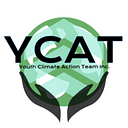Tokamaks: A Solution to the Energy Crisis?
The tokamak could be the solution to reducing carbon emissions in 2022. Created in the 1950s in Soviet Russia, the modern tokamak is one of many attempts to create a working and sustainable solution to cutting emissions. This donut-shaped device generates energy through nuclear fusion, the same process the sun and stars use to produce heat. The tokamak works by heating tritium, a product of nuclear fission, and deuterium, which can be found in seawater, to a temperature that is 10 times hotter than the sun’s center. The magnetic field around these hydrogen isotopes holds them in place while the tokamak quickly spins around to create plasma. This plasma can be used as a source of energy for homes, wind turbines, and virtually anything else that requires electrical power.
This device showed promising results when the Joint European Torus (JET) facility was able to produce 59 megajoules of energy and sustain it for five seconds, which is equivalent to powering 35 thousand homes. A major benefit of the tokamak is that it is a safer and less polluting alternative to the burning of fossil fuels because it only produces helium as a waste product while generating four million times more energy.
Unfortunately, the downside to tokamaks can be seen in their energy input. Since the creation of these devices, no tokamak has been able to produce more energy than the amount put into them. However, scientists are working diligently to sustain the energy that tokamaks produce. In southern France, the JET facility is building an advanced version of their tokamak called ITER (“The Way” in Latin). They hope that this new and improved tokamak can sustain itself for more than 300 seconds.
The next step in converting fusion energy to electrical power is in the hands of engineers. Ian Fells, University of Newcastle professor of energy conversion, explains that engineers must find a way to translate carbon-free electricity to lessen the severity of climate change in the future.
While these devices may not be the most practical solutions to the reduction of carbon emissions amid the current ongoing climate crisis, they could be very useful in the future. The ITER tokamak could lead to a fusion prototype power plant as early as 2050. This plant would distribute fusion energy on an industrial scale to many homes for them to run on eco-friendly electricity. Scientists hope that this will lead to net-zero carbon emissions around the world.
